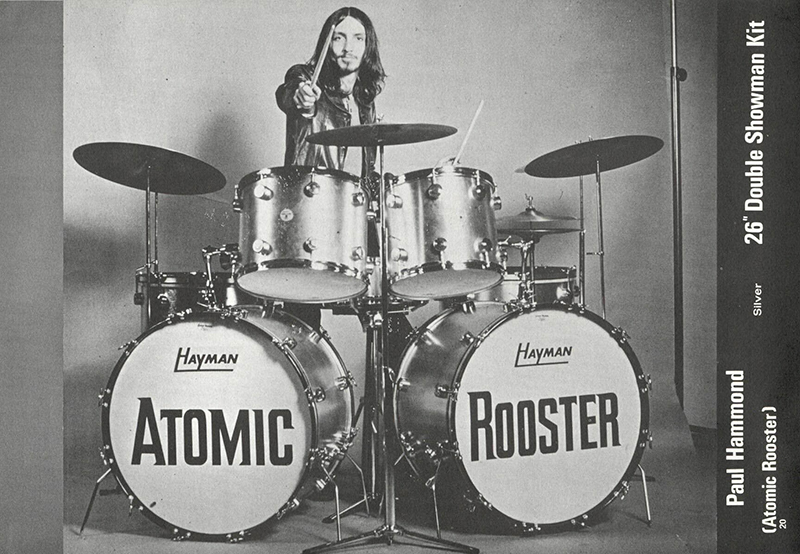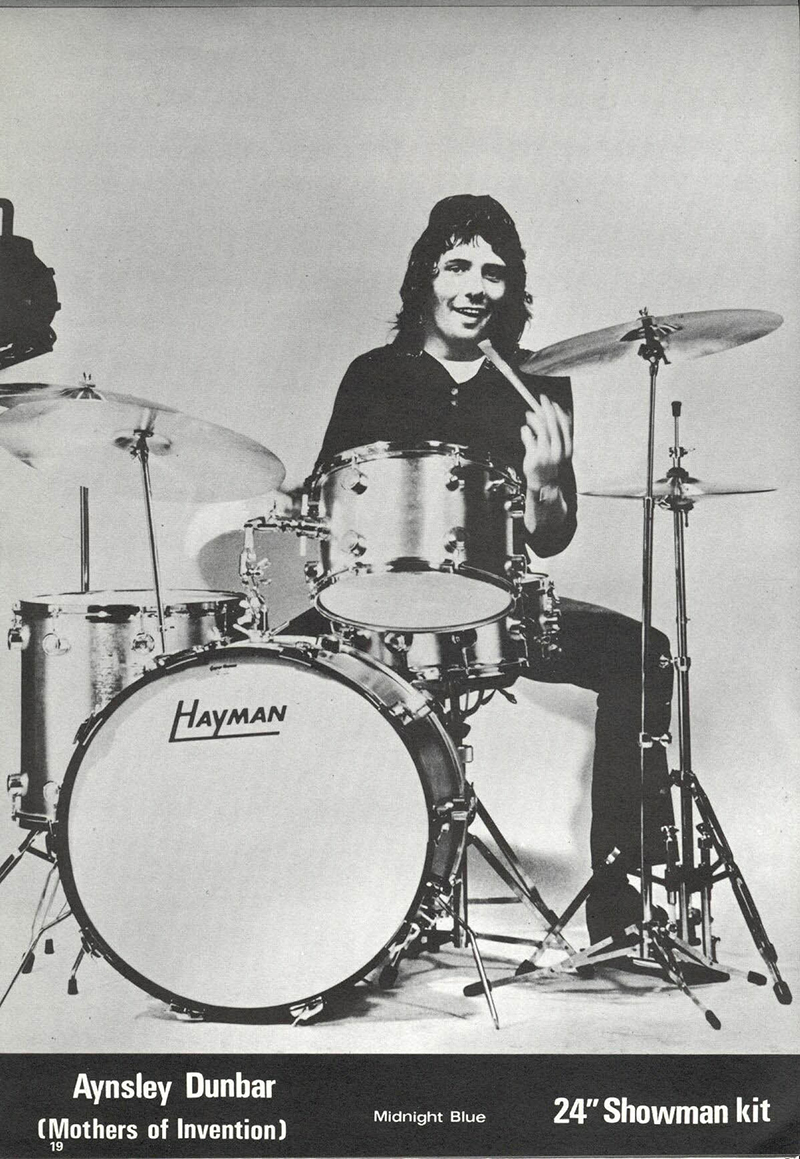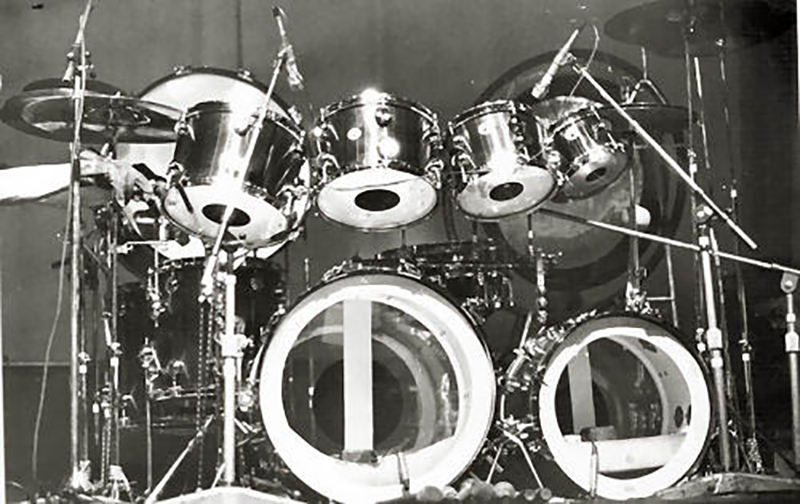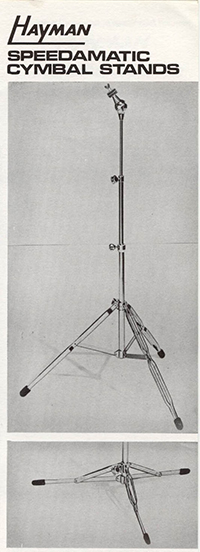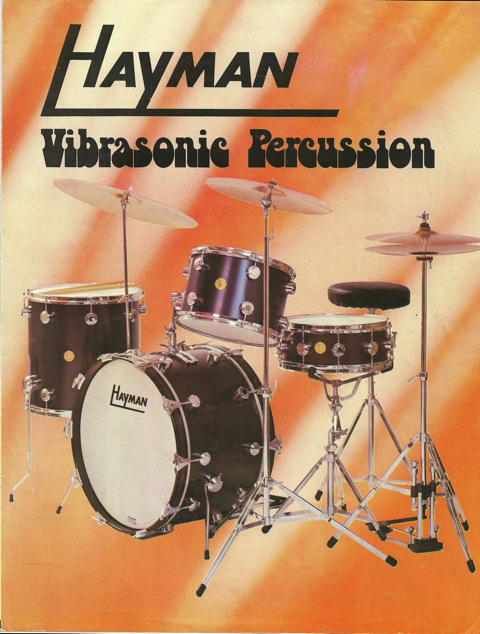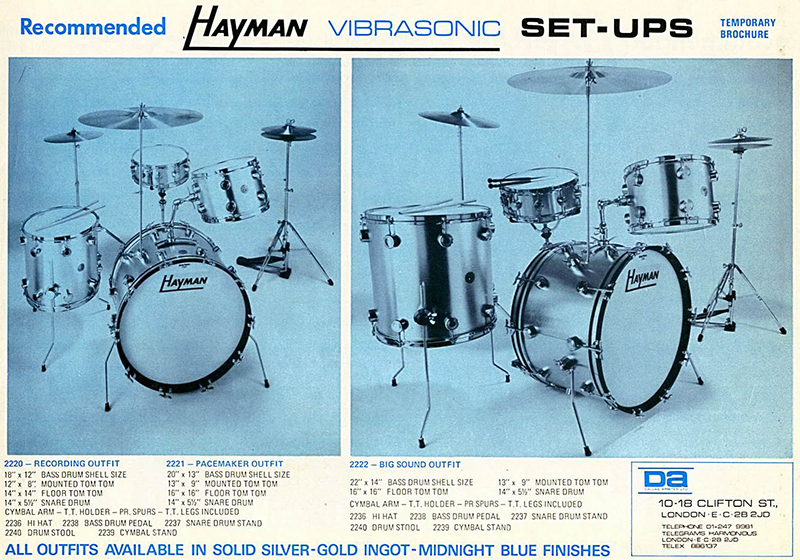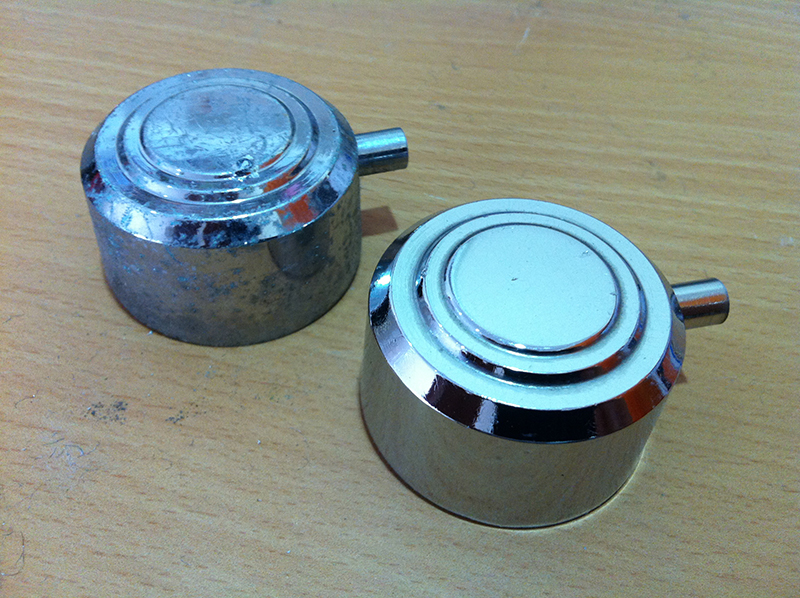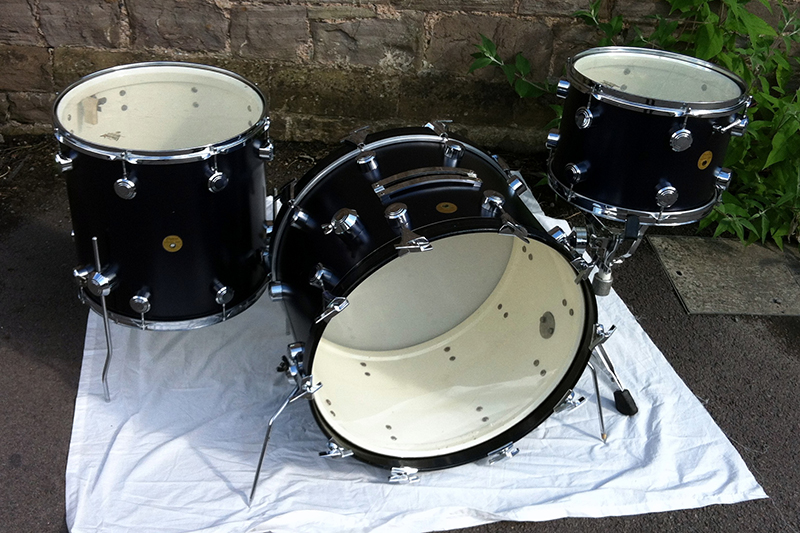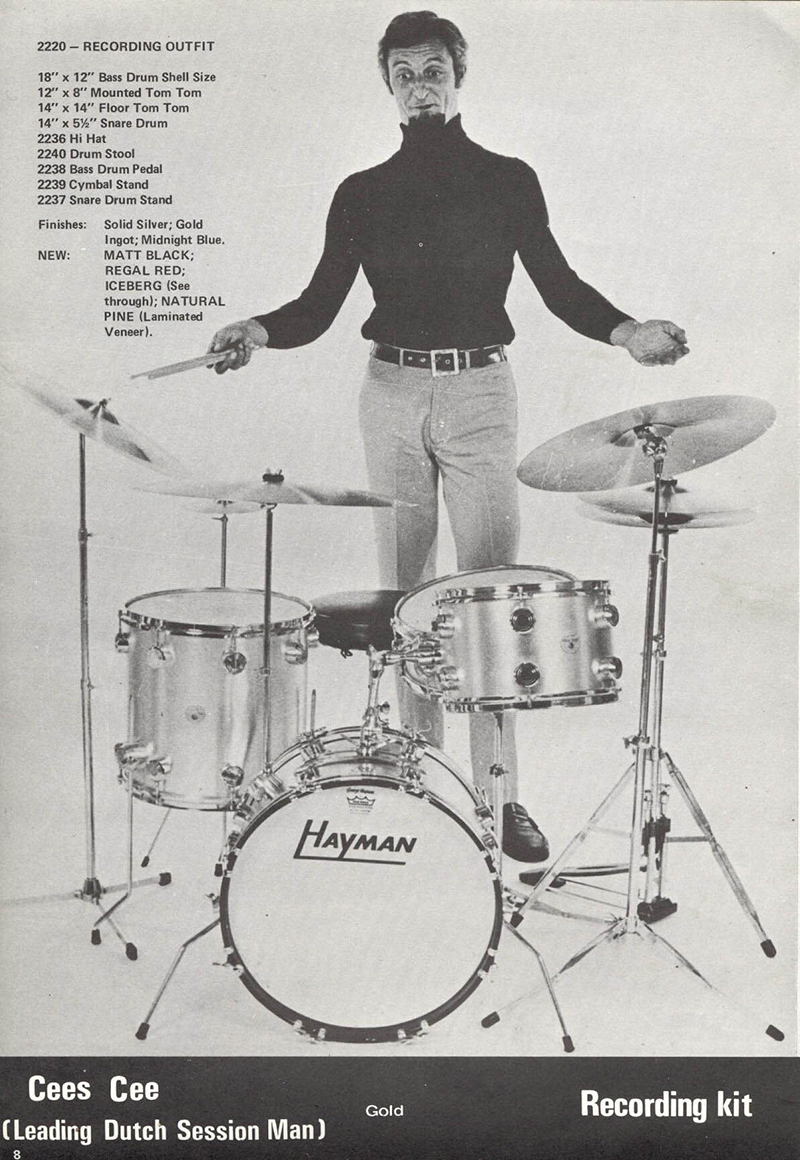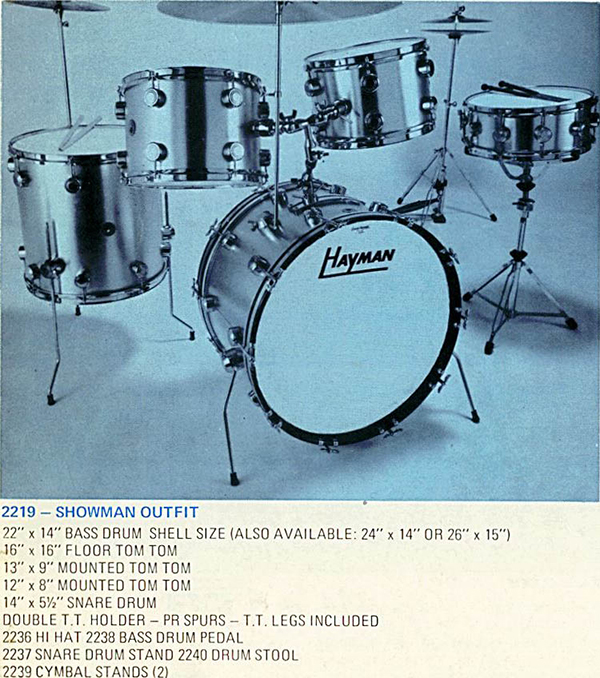1968 saw the introduction of a new English drum manufacturer, Hayman. The man behind these drums was Ivor Arbiter, who according to Bob Henrit was the first to import Ludwig and Gretsch drums into the UK during ‘the Beat Boom’. Arbiter had identified a gap in the market for a set of loud drums that would get heard over the ever increasing volume of amplified music.
If you’re looking for a classic vintage English kit with a unique sound, then look no further than Hayman. There’s been a resurgence of interest in these British beauties in the last couple of years here in the UK. In their short production time, they attracted a number of high profile endorsers; even today, many name players have a Hayman kit in their collection for studio work due to their unique sound.
Originally named ‘George Hayman’, but quickly shortened to ‘Hayman’, these drums looked and sounded different to other English kits. With their turret style lugs, at a glance it would be easy to mistake these for Camco drums. But use your ears and you’ll experience a loud, resonant set of drums that live up to the name on their badges – ‘vibrasonic’.
Handcrafted in the UK, Hayman were marketed as ‘The greatest drum happening since the plastic head’ and claimed to be ‘more resonant than any drum on the market’.
Their quality control was so thorough all drums were sold with a lifetime guarantee. So let’s have a look at these drums in more detail….
Aside from lugs, their other most distinguishable feature was their shell interiors, with a ‘vibrasonic’ coating - Seven coats of special metallic poly-eurathene spray, bonded to the internals of the shell, claimed to be superior to Ludwig’s ‘resocote’. The shells were made of cross laminated Swedish Ply (which according to the catalogue was more expensive than regular ply and stronger due to the cross lamination) and featured 8 ply internal support rims (also laminated individually for extra strength). Initially produced in only 3 brushed metallic finishes (gold, silver and midnight blue -brass badges ’69-73), other colors were introduced later (regal red, matt black, natural pine and iceberg- smaller, silver badges ’73-75). The earlier finishes were triple laminate layers of Melinex and metal foil, which were flame resistant. They were unique to Hayman and I haven’t seen them anywhere else (although I read somewhere these coatings were used on refrigerators).
The kits were marketed in the following configurations; ‘The Pacemaker’ 20, 13, 16 & snare; ‘The Big Sound’ 22, 13, 16 & snare; ‘The Showman’ 22,12,13,16 & snare; ‘The Recording’ 18, 12, 14 & snare. Bass drums were available up to a 26”, but most kits still in circulation today are the ‘Big Sound’ and ‘Showman’.
The hardware on these drums were innovative for an English kit in the 60’s; fold-out ‘Holdfast’ bass drum spurs, triple flange hoops, ‘baseball bat’ dampers and adjustable swivel tom mounts. The tom post mounted onto a flat, curved rail on the bass drum, which one could slide to obtain optimum positioning; claimed to be ‘the most advanced to come from any drum factory’ boasting every angle and height adjustment with ‘functional thumb screws that stay firm’. Anyone who’s used them would probably disagree, as they are very difficult to negotiate and famously crush your fingers. The bass drum rods were among the first shaped to actually enable the drummer to tune his bass drum with ease.
The snare drums were the first non-American snare drum to feature 10 lugs and a simple throw off. With the vibrasonic lining and fitted with 22 strand wires, they were advertised as having the sound of a metal drum.
Speedomatic stands accompanied these sets, once again with groundbreaking features, the most rugged on the market at the time. The snare stand was the first in Britain to offer a basket holding mechanism, cymbal stands were offered as either tripod or flat base. The hi hat stand had double tension springs and the bass drum pedal was fibre belted.
Unfortunately, The Hayman brand was finished by 1975, although it was briefly re-launched in the 80’s with the shells made in Taiwan. Don’t mistake these drums for the originals.
Key players - Wilgar Campbell (Rory Gallagher); Randy Jones (Maynard Ferguson band); Paul Hammond (Atomic Rooster); Aynsley Dunbar ; Brian Bennett (The Shadows); Rob Townsend (Family); Ronnie Verrall; Bob Henrit (Argent, Kinks), Bill Bruford (Yes), Simon Kirke (Free), Mitch Mitchell (Jimi Hendrix Experience), Mitch Mitchell (Jimi Hendrix Experience) and many others over the years.
NB: Bob Henrit is currently writing the Arbiter book and we look forward to this being published soon. He’s just released his autobiography ‘Banging On’ which is a worthy read.

